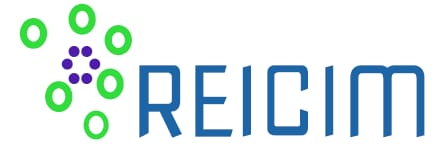Influencia de las campañas publicitarias en el posicionamiento del Instituto Tecnológico Atlantic
Palabras clave:
Publicidad, Redes sociales, Posicionamiento, EducaciónResumen
Cada vez más se extiende el uso de las redes sociales no solo como forma de comunicación e información sino como vía de publicidad de los negocios. Estas se caracterizan por su bajo costo y alto poder de penetración e influencia. En esta investigaicón se parte de una caracterización general de las publicaciones relativas al uso de las redes sociales como medio de publicidad para posteriormente presentar los resultados de aplicar una metodología para la promoción de los servicios académicos del Instituto Superior Tecnológico Atlantic. A través de la aplicación de la metodología se logró dar a a conocer los servicios de la institución a más de 50 000 personas y se pudo establecer la existencia de un posicionamiento favorable de la institución respecto a varios de sus competidores en lo relativos a cuatro de los atributos establecidos como diferenciadores: costos, flexiblilidad de horario, duración del servicio y calidad.
Citas
Borrero-Ojuelos, R. B., & Bermejo-Berros, J. (2021). Educating in advertising. Product placement in the audiovisual entertainment age. Campus Virtuales, 10(2), 127-140. Scopus. https://www.scopus.com/inward/record.uri?eid=2-s2.0-85111872783&partnerID=40&md5=551a1af23f6e91fd5ac0c2104439af5b
Bouthillier, M., Canil, A., Cheng, B. Y. C., Lebel, K., & Dobson, J. L. (2022). Inaugural Pan-Canadian RADGames: Results From a Successful Approach to Radiology Education for Medical Students. Academic Radiology. Scopus. https://doi.org/10.1016/j.acra.2022.07.005
Cordero-Gutiérrez, R., & Lahuerta-Otero, E. (2019). Leveraging knowledge management to promote higher education programs using paid social media. En Uden L., Ting I.-H., & Corchado J.M., Commun. Comput. Info. Sci. (Vol. 1027, p. 323). Springer Verlag; Scopus. https://doi.org/10.1007/978-3-030-21451-7_27
Farley, J. U., & Leavitt, H. J. (1971). Marketing and population problems. Journal of marketing, 35(3), 28-33. Scopus. https://doi.org/10.2307/1249786
Ishmuradova, I. I., Kamasheva, Y. L., Khanmurzina, R. R., Borysova, O. V., Makarov, A. L., Denisova, R. R., & Kora, N. A. (2020). Marketing approach in educational institutions management: Transformation and development management. Journal of Environmental Treatment Techniques, 8(4), 1304-1308. Scopus. https://doi.org/10.47277/JETT/8(4)1308
Johnson, G., Foster, K., Blinkhorn, A., & Wright, F. C. (2019). Exploration of the factors that influence new Australian dental graduates to work rurally and their perspectives of rural versus metropolitan employment. European Journal of Dental Education, 23(4), 437-447. Scopus. https://doi.org/10.1111/eje.12450
Kent, M., & Leaver, T. (2014). An education in facebook?: Higher education and the world’s largest social network. En An Education in Facebook?: High. Education and the World’s Larg. Soc. Netw. (p. 231). Taylor and Francis; Scopus. https://www.scopus.com/inward/record.uri?eid=2-s2.0-84954582339&partnerID=40&md5=686db584da8a4c24775e1bc8f4fdd442
Kisiołek, A., Karyy, O., & Нalkiv, L. (2021). Social media in marketing management of higher education institutions in the context of poland and ukraine. Polish Journal of Management Studies, 24(1), 164-182. Scopus. https://doi.org/10.17512/pjms.2021.24.1.10
Kotler P.; Arsmtrong G. (2012). Marketing. Ed. Pearson. ISBN: 978-607-32-1420-9. 720pp.
Martin-Fuentes, E., Daries-Ramón, N., & Cristóbal Fransi, E. (2014). Institutional communication in university management: Study applied to student recruitment. Ilu, 19, 591-604. Scopus. https://doi.org/10.5209/rev_HICS.2014.v19.45051
Meyrowitz, A., & Fiske, M. (1939). The relative preference of low income groups for small stations. Journal of Applied Psychology, 23(1), 158-162. Scopus. https://doi.org/10.1037/h0058199
Mickienė, R., & Valionienė, E. (2021). Modelling the effectiveness index of digital marketing strategy oriented to increase the popularity of maritime education. TransNav, 15(3), 559-567. Scopus. https://doi.org/10.12716/1001.15.03.08
Mowforth, O., Davies, B., Stewart, M., Smith, S., Willison, A., Ahmed, S., Starkey, M., Sadler, I., Sarewitz, E., Stacpoole, S., & Kotter, M. (2020). Current provision of myelopathy education in medical schools in the UK: Protocol for a national medical student survey. BMJ Open, 10(8). Scopus. https://doi.org/10.1136/bmjopen-2019-035563
Tovar, E., Lopez-Vargas, J. A., Piedra, N. O., & Chicaiza, J. A. (2013). Impact of open educational resources in higher education institutions in spain and latin americas through social network analysis. ASEE Annu. Conf. Expos. Conf. Proc. Scopus. https://www.scopus.com/inward/record.uri?eid=2-s2.0-84884302480&partnerID=40&md5=d74077351631f80efa01644cf2aa4d44
Vetrova, E. A., Kabanova, E. E., Medvedeva, N. V., & Jukova, E. E. (2019). Management of educational services promotion in the field of higher education (the example of «Russian State Social University»). European Journal of Contemporary Education, 8(2), 370-377. Scopus. https://doi.org/10.13187/ejced.2019.2.370
Zhu, Z. (2021). Composition of Online Teaching and Academic Ability under the Background of Artificial Intelligence and HTML. Proc. - Int. Conf. Comput. Methodol. Commun., ICCMC, 1467-1470. Scopus. https://doi.org/10.1109/ICCMC51019.2021.9418250










